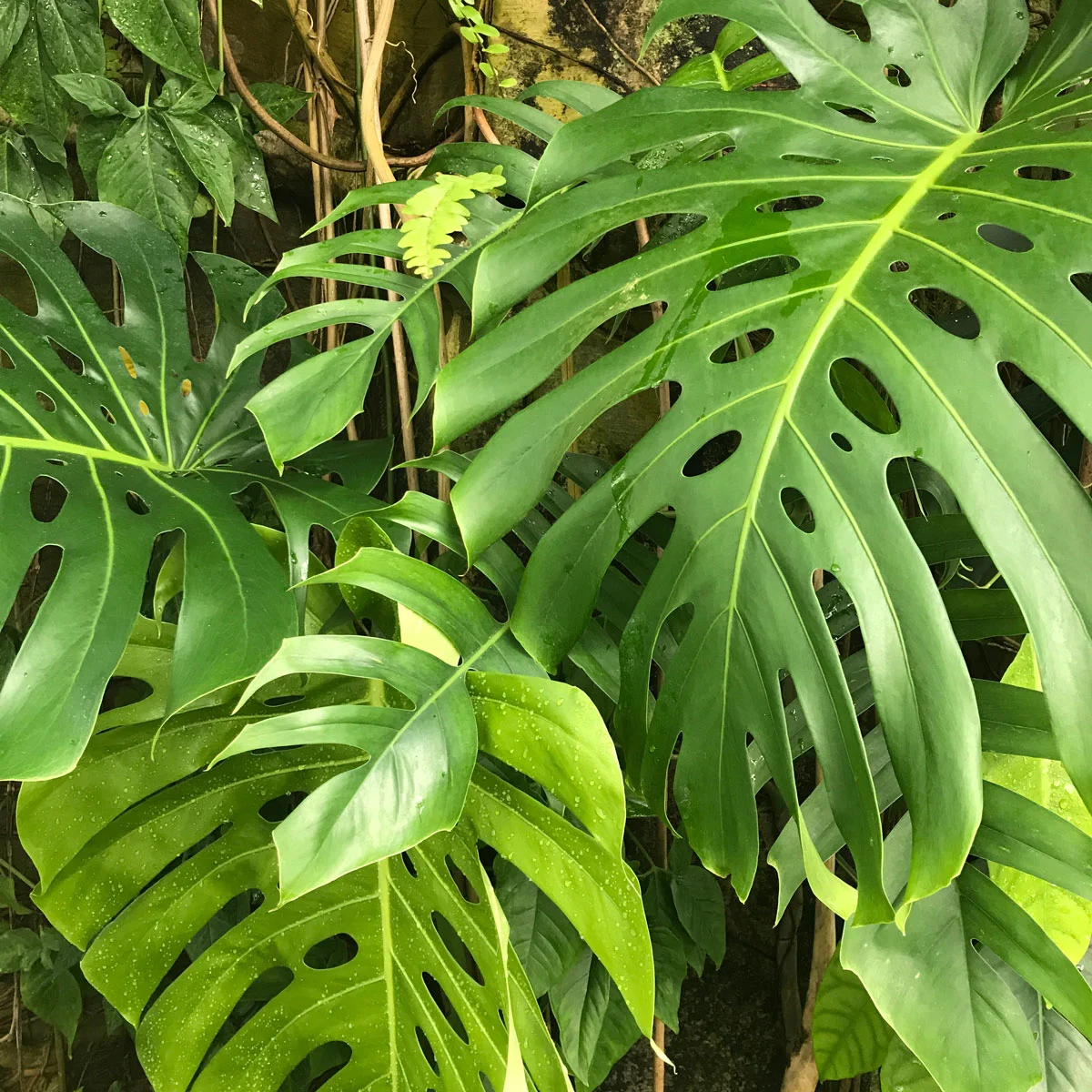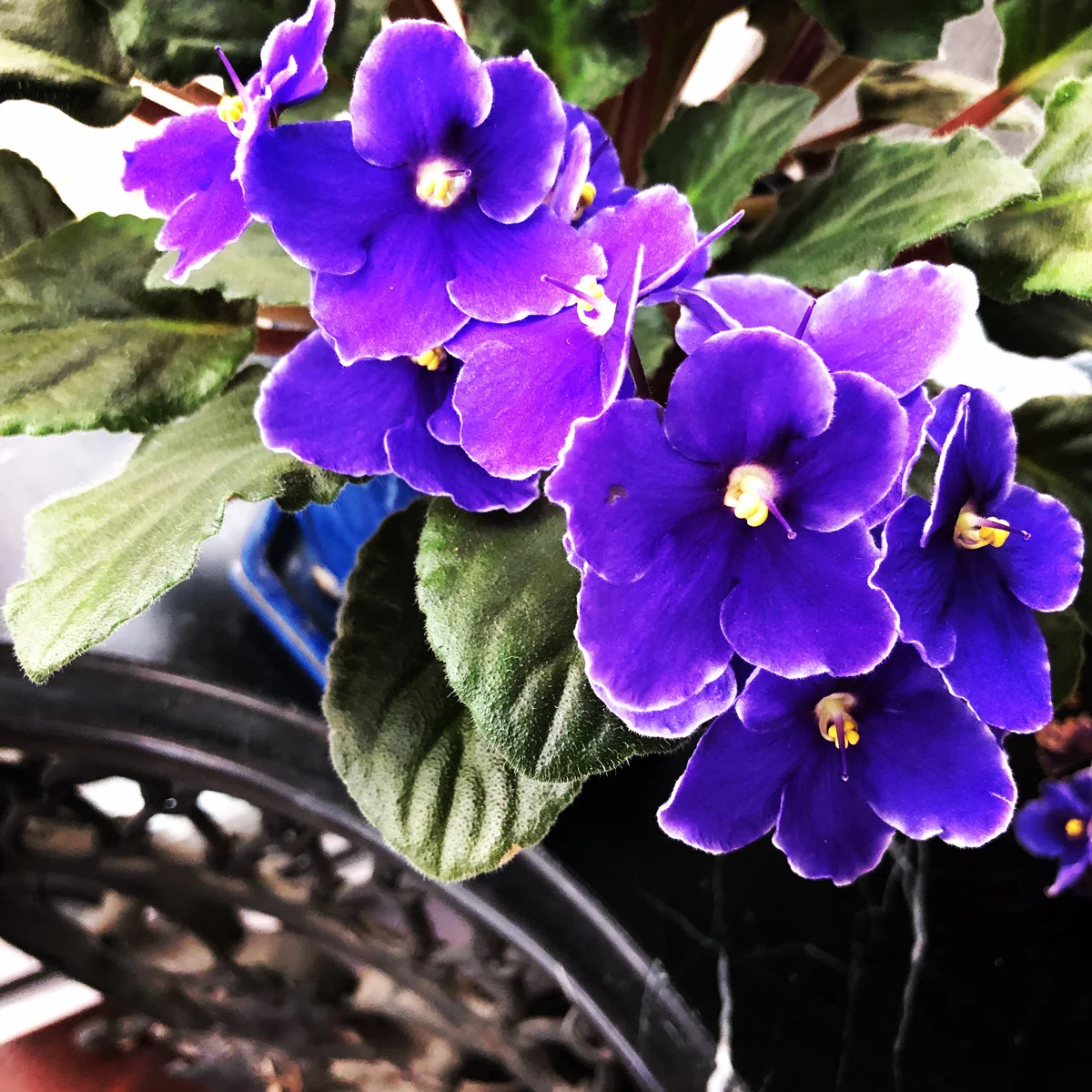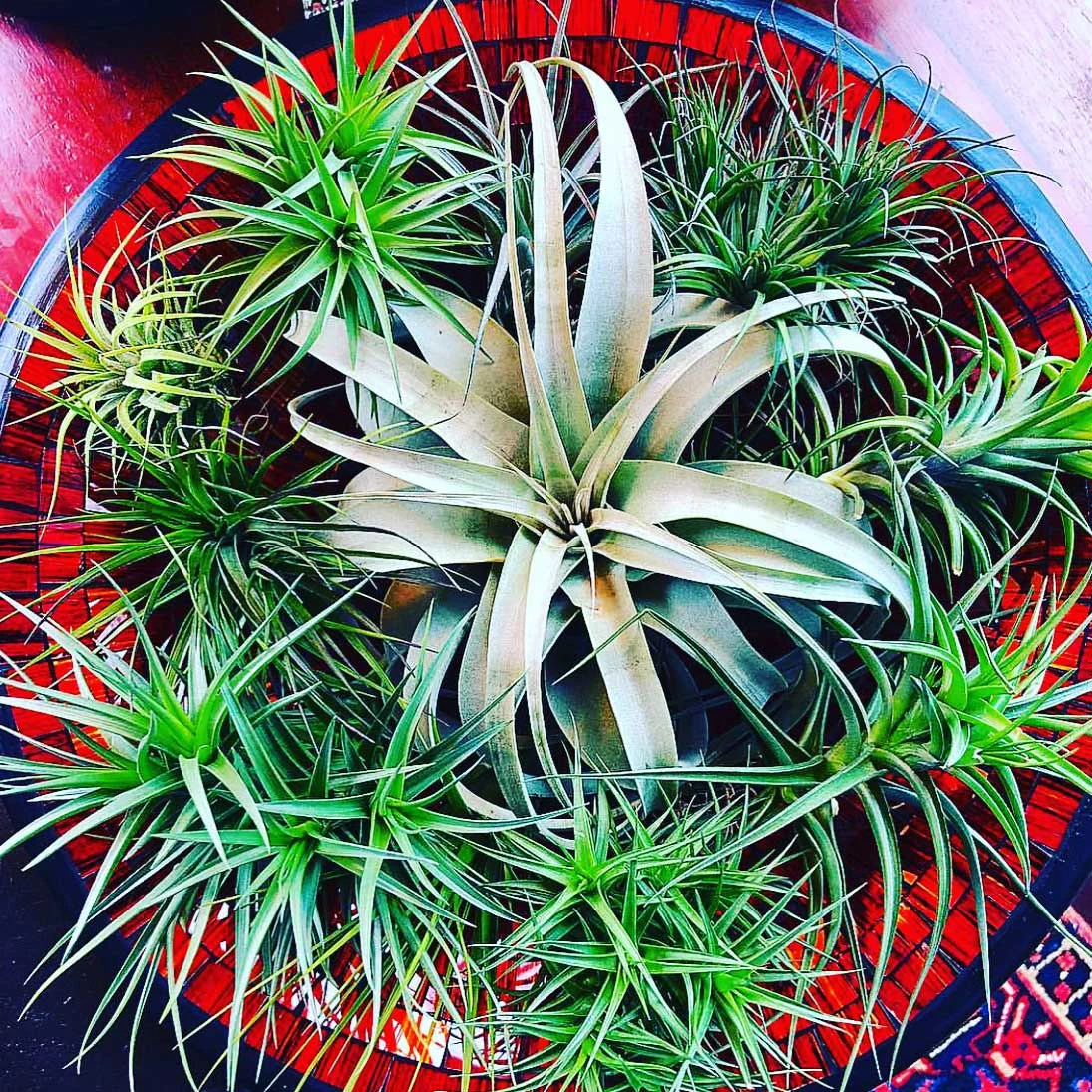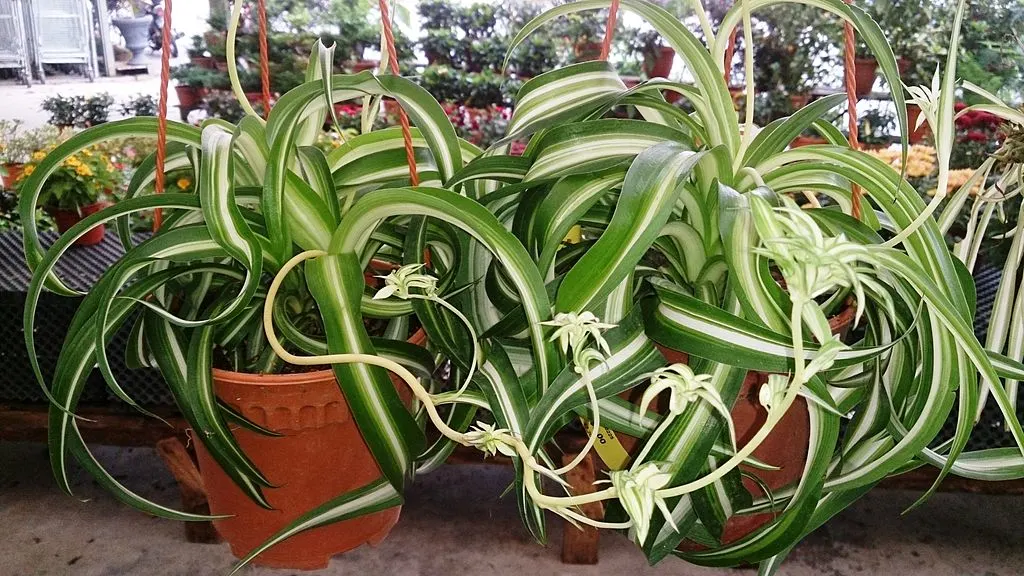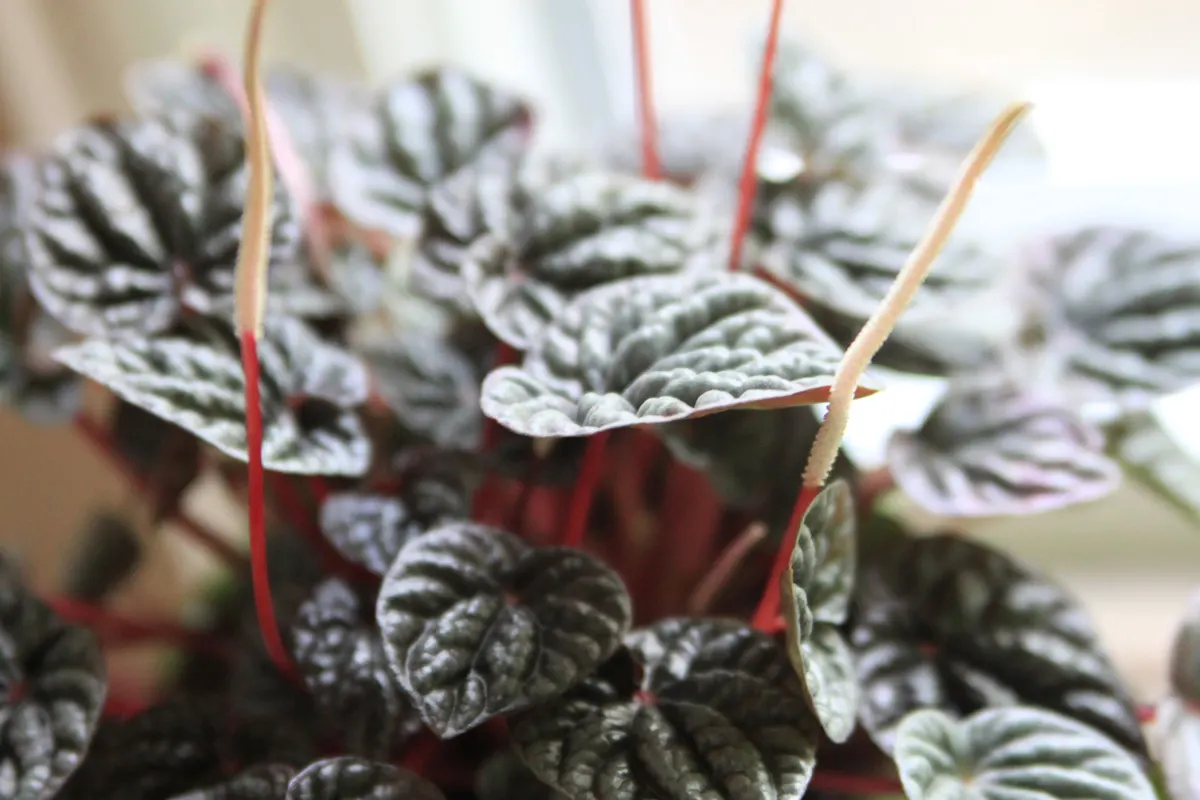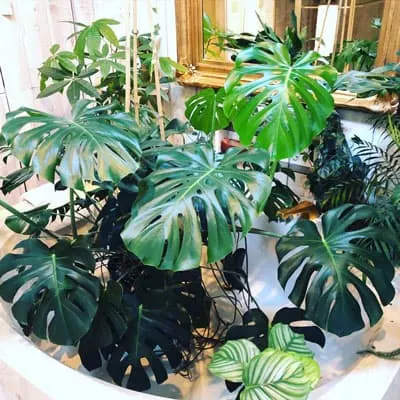Some of the links in this post may be affiliate links.
If you have any curious cats and dogs that like to nibble on your houseplants, it’s a very valid concern to wonder if any of your plants are toxic. In this post, I’ve compiled 40 toxic houseplants for cats and dogs. It doesn’t mean that they’re all dangerous, but there are some details that you need to know.
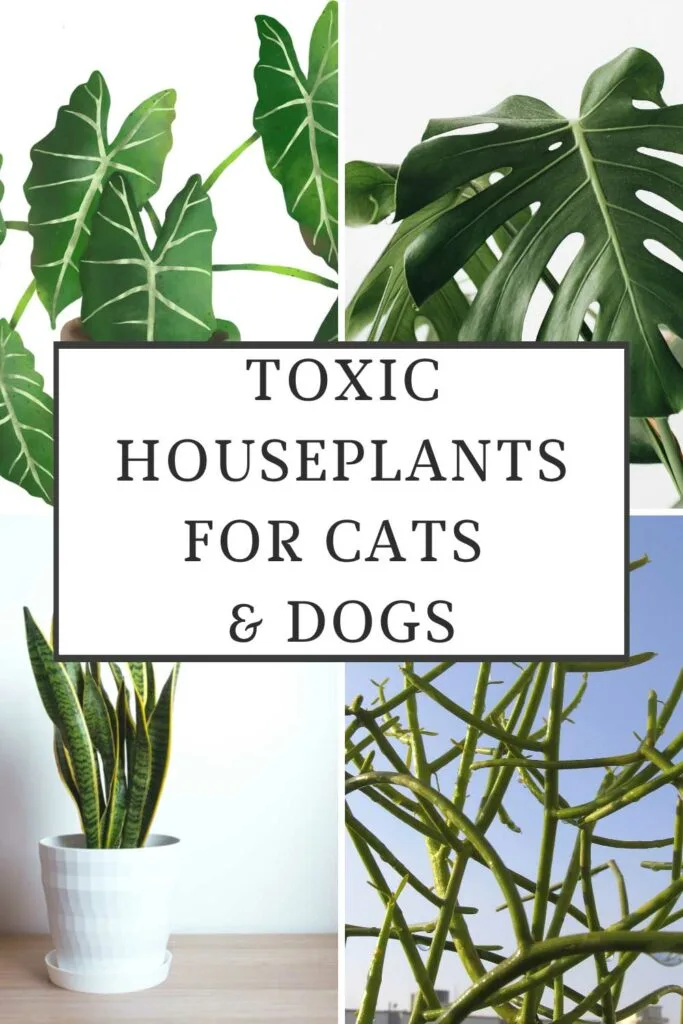
This is not a comprehensive list, but I’ve listed many of the common plants that you probably have in your home. There are quite a few houseplants that are considered toxic…probably more than you think!
All of these houseplants in this post are verified to be toxic by the ASPCA.
Nibbling on toxic houseplants can cause issues for your cat or dog. While not always life threatening, eating plants can often cause vomiting, swelling, irritation of your pet’s mouth and more.
If you see any unusual behaviors in your cat or dog after they’ve nibbled on your plants, contact your vet immediately. Or you can contact the ASPCA Animal Poison Control Center for emergencies 24/7 and 365 days a year.
Now let’s explore 40 toxic houseplants for cats and dogs that you may have in your home, or perhaps thinking about collecting.
Table of Contents
TOXIC HOUSEPLANTS FOR CATS AND DOGS
1. ALOCASIA
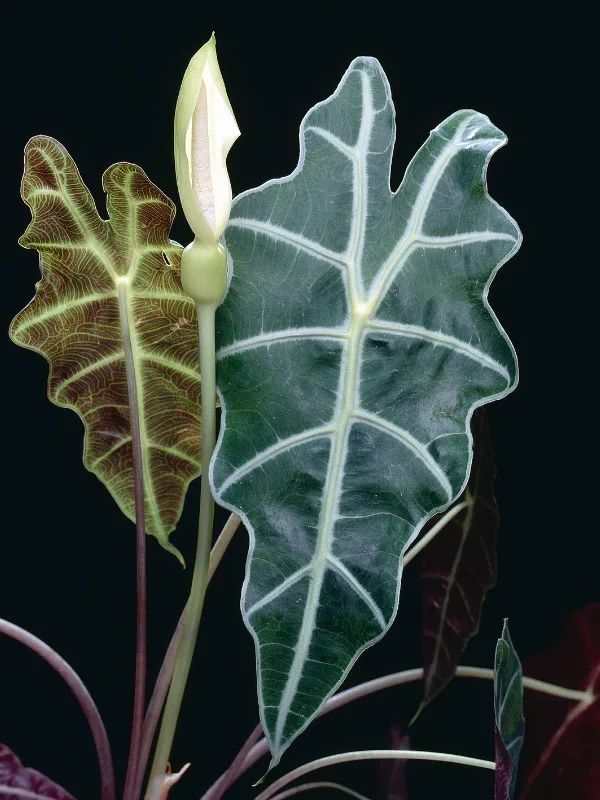
There are many Alocasia varieties that you can grow, and unfortunately they are all toxic due to calcium oxalate crystals.
If your critters nibble on these plants, it can cause a lot of oral discomfort and swelling in the mouth and tongue.
2. ALOE
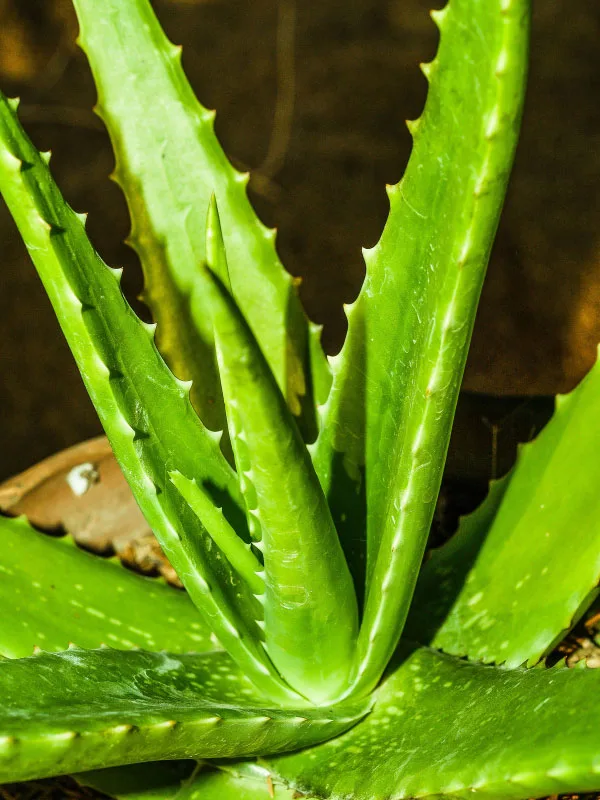
This one surprised me, since Aloe is often used topically and internally in people, but it is listed as toxic for cats and dogs due to Saponins and anthraquinones.
Ingesting Aloe can cause diarrhea, vomiting and lethargy in your pet (though the gel in the interior of the leaves is edible).
3. AMARYLLIS
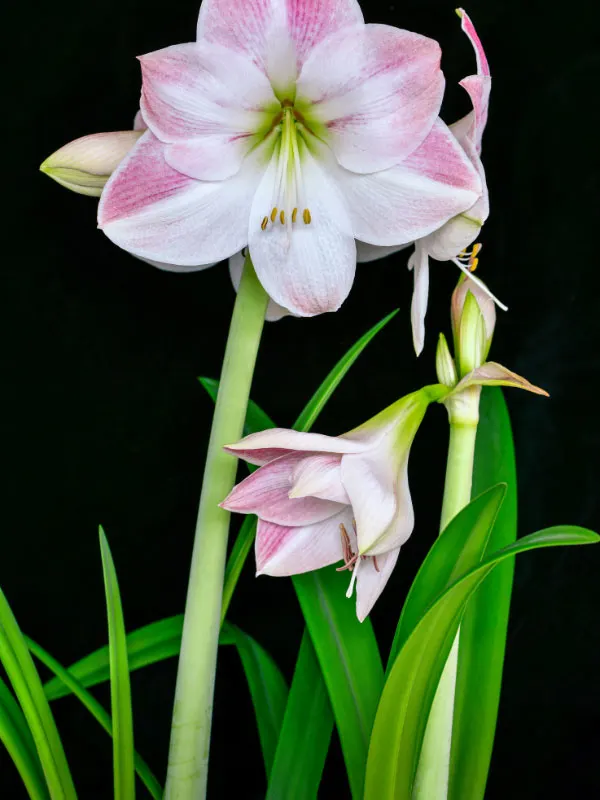
You can’t really get much showier than an Amaryllis bloom, but unfortunately they are toxic to cats and dogs due to the presence of lycorine and other compounds.
Signs of ingestion include diarrhea, vomiting, drooling, tremors, and more.
4. ANTHURIUM
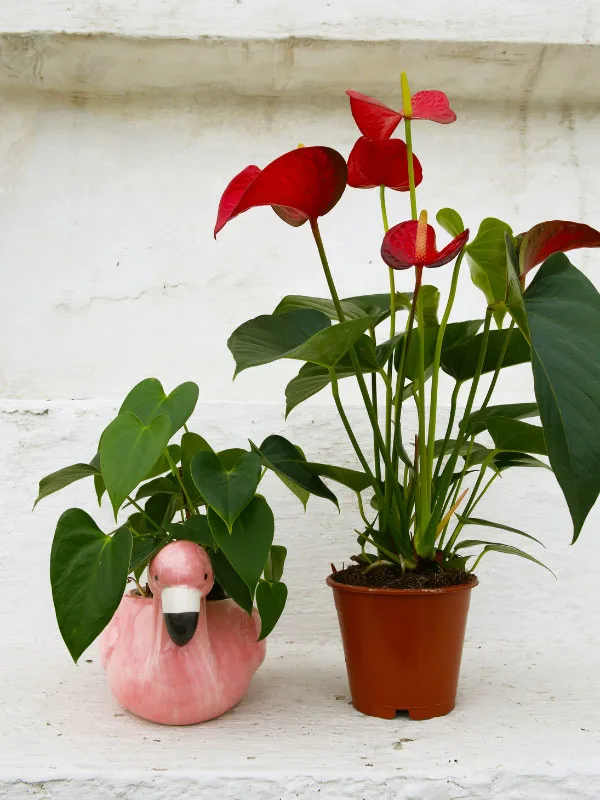
With so many beautiful Anthurium varieties out there, these popular plants are unfortunately toxic.
Like any aroid, Anthuriums contain calcium oxalates which can cause a lot of oral irritation as well as swelling in the mouth and drooling in your cats and dogs after they try nibbling on them.
5. ASPARAGUS FERN
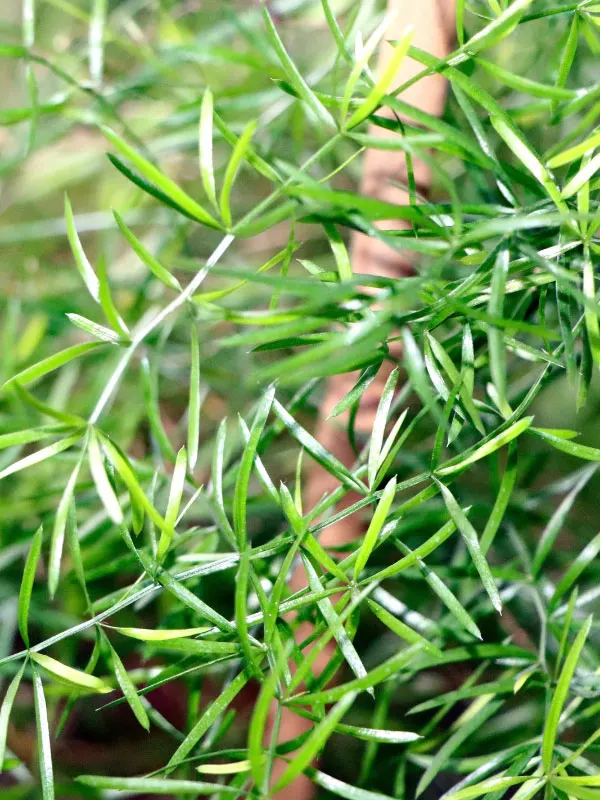
Not a true fern at all, the Asparagus Fern is toxic to cats and dogs and it can cause dermatitis if your pets repeatedly rub up against it.
The plant also produces berries which could upset your pet’s digestive system.
6. BAY LAUREL
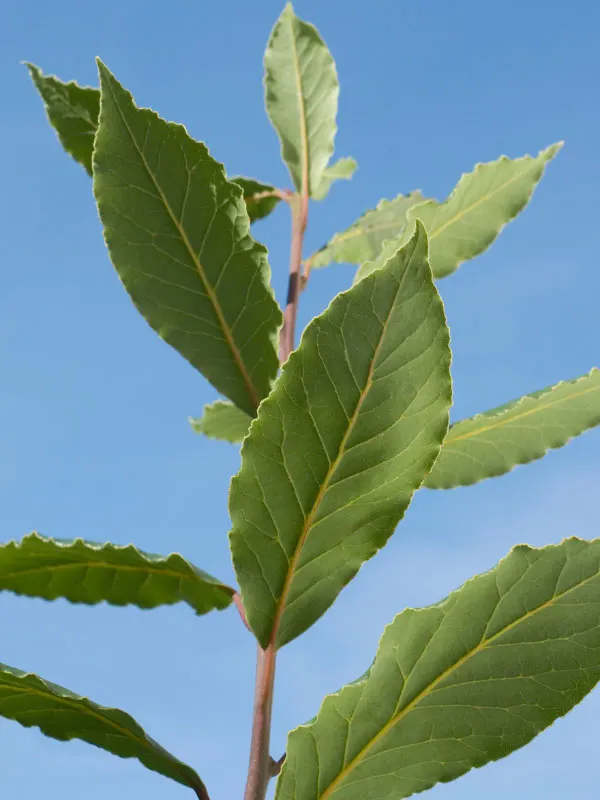
This tasty herb is used often in cooking, but unfortunately is toxic to your pets due to the presence of eugenol and other essential oils which can cause vomiting and diarrhea .
7. BEGONIA
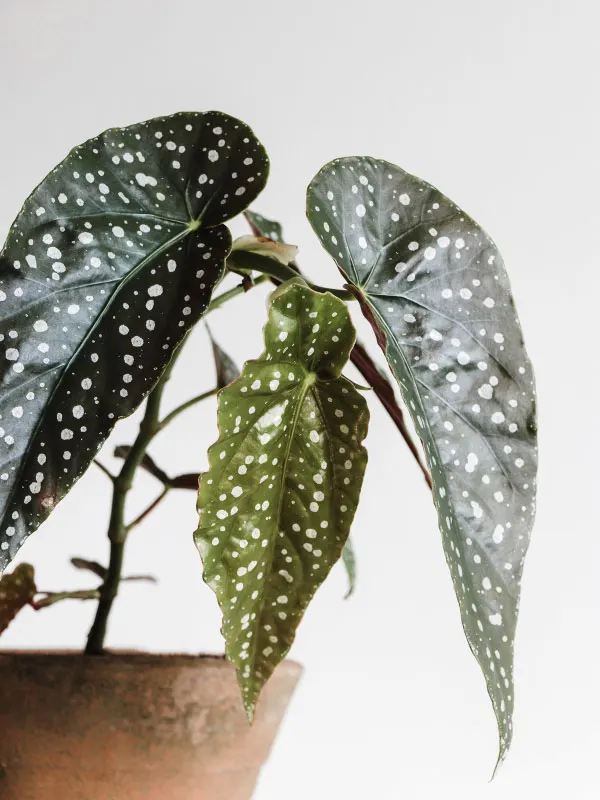
With so many beautiful Begonia varieties, it is also important to note that they are not pet safe.
The soluble calcium oxalates can cause drooling, vomiting and even kidney failure.
8. BIRD OF PARADISE
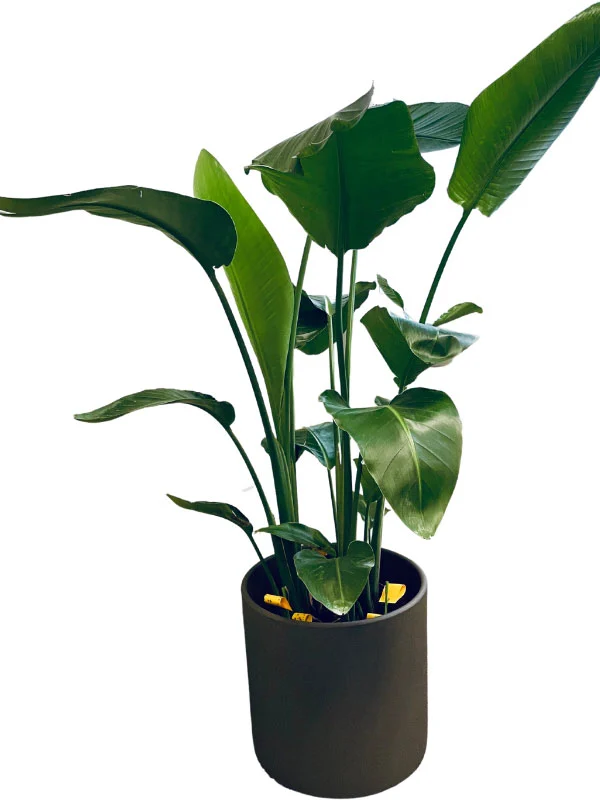
This familiar and popular large indoor plant can cause vomiting and drowsiness, but mainly from the fruit and seeds.
9. CALADIUM
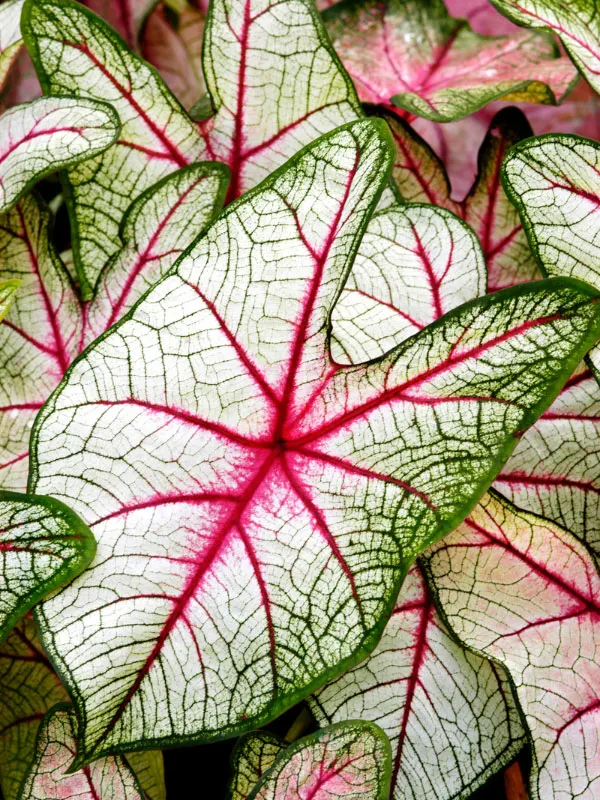
Few foliage plants match the show that Caladiums display with their stunning colors and patterns, but nibbling kitties and puppies may experience oral irritation, pain and swelling due to calcium oxalates if they nibble on these plants.
10. CALAMONDIN ORANGE
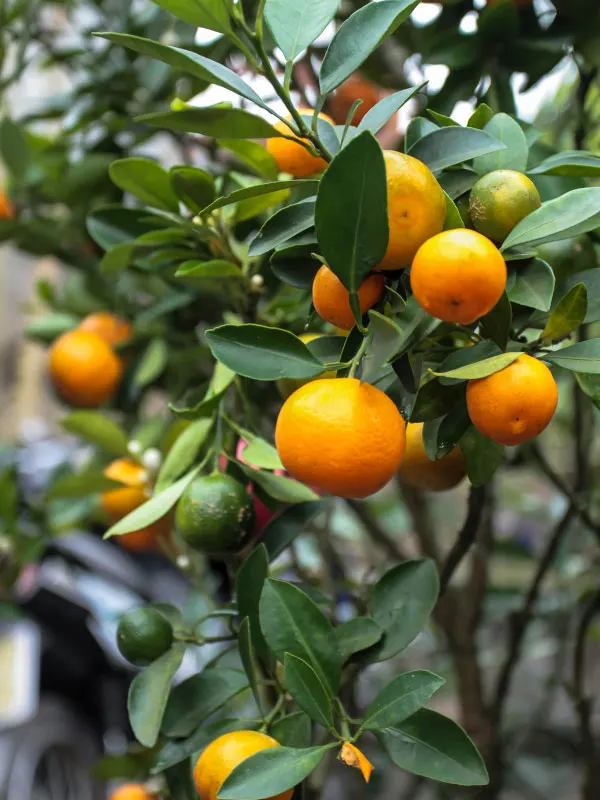
While edible for people, these mini citrus fruits can cause vomiting, diarrhea and more in your cat or dog if ingested. Various essential oils and psoralens are the culprits.
11. CALLA LILY
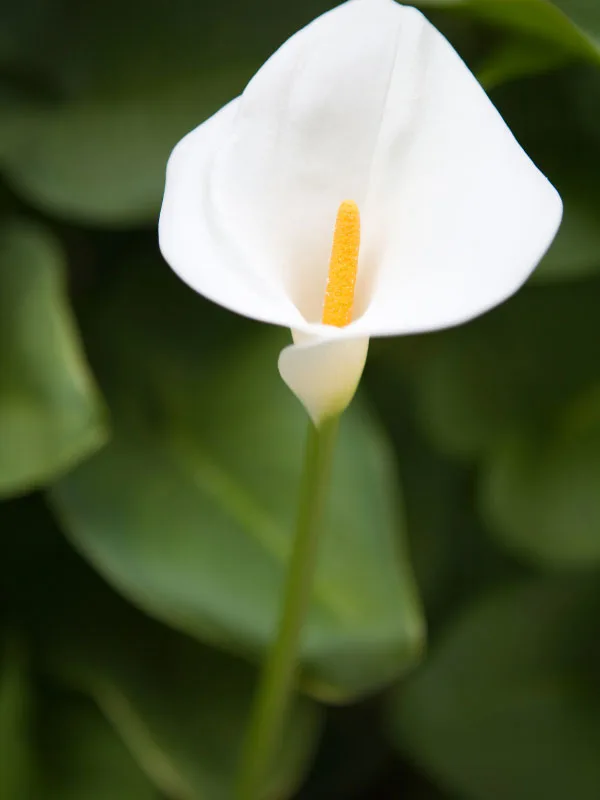
This common florist plant is toxic to cats and dogs due to insoluble calcium oxalates. If ingested, it can cause a lot of oral irritation and burning, vomiting, and more.
12. CHINESE EVERGREEN
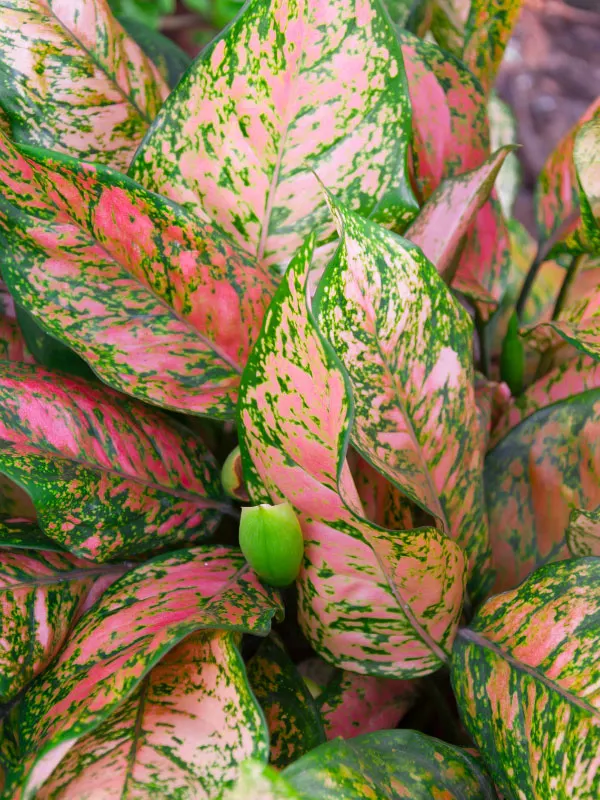
This common houseplant comes in a variety of beautiful colors, but unfortunately Chinese Evergreen (Aglaonema) is also toxic due to insoluble calcium oxalates which can cause oral irritation, vomiting and more.
13. CLIVIA
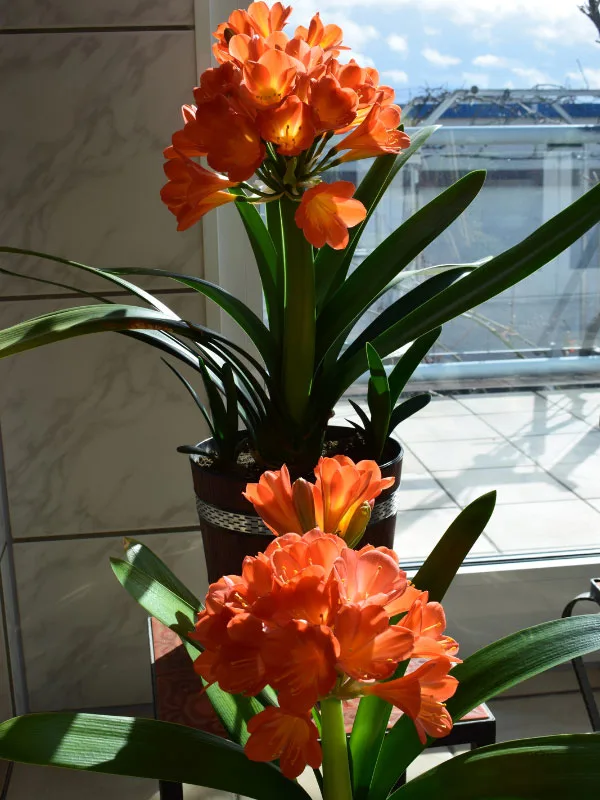
The bulbs are the most poisonous part of the clivia lily or kaffir lily due to lycorine and other alkaloids present.
Common signs of ingestion include vomiting, diarrhea, and even convulsions or worse if a lot is eaten by your cat or dog.
14. CORN PLANT (DRACAENA FRAGRANS)
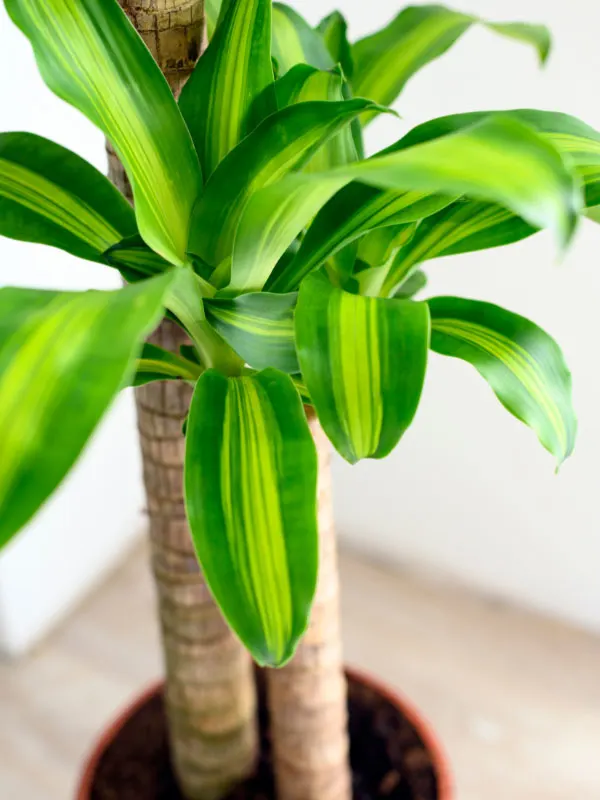
The ubiquitous corn plant (Dracaena fragrans) is toxic due to saponins that are present in the plant. Ingestion can cause dilated pupils in cats, as well as vomiting, anorexia and more.
15. CYCLAMEN
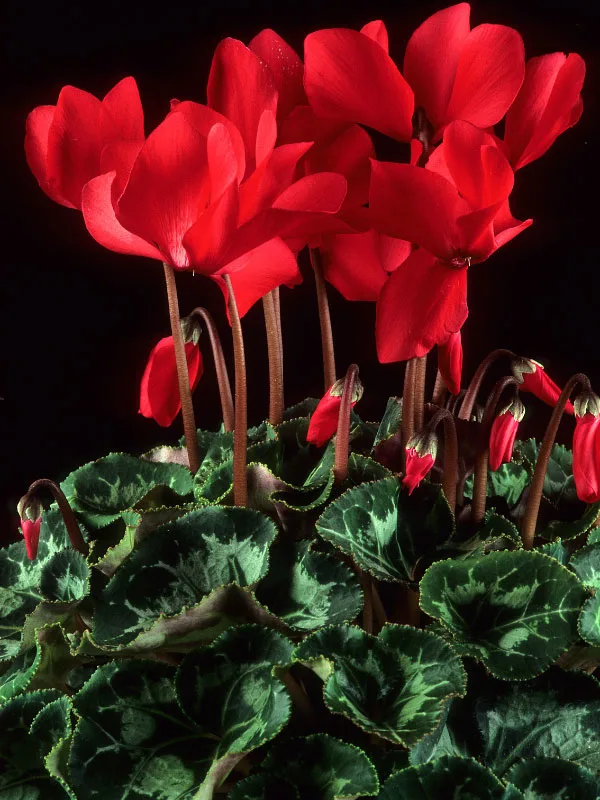
This very common potted plant is unfortunately quite toxic to cats and dogs due to terpenoid saponins that can cause vomiting and diarrhea, and even seizures or death if a lot of the tubers are eaten.
16. DESERT ROSE
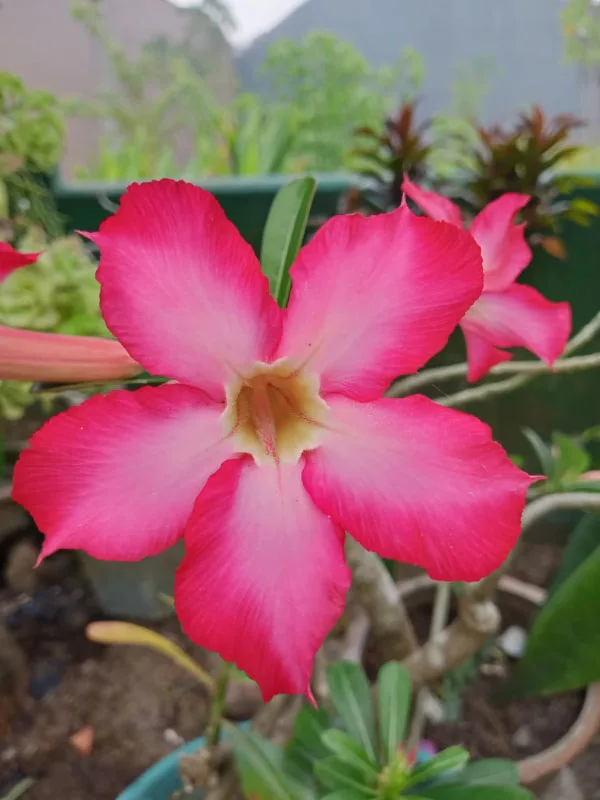
Adenium obesum, commonly known as Desert Rose, contains cardiac glycosides which can cause diarrhea and vomiting, and in worse cases, even an irregular heart beat and death.
17. DIEFFENBACHIA
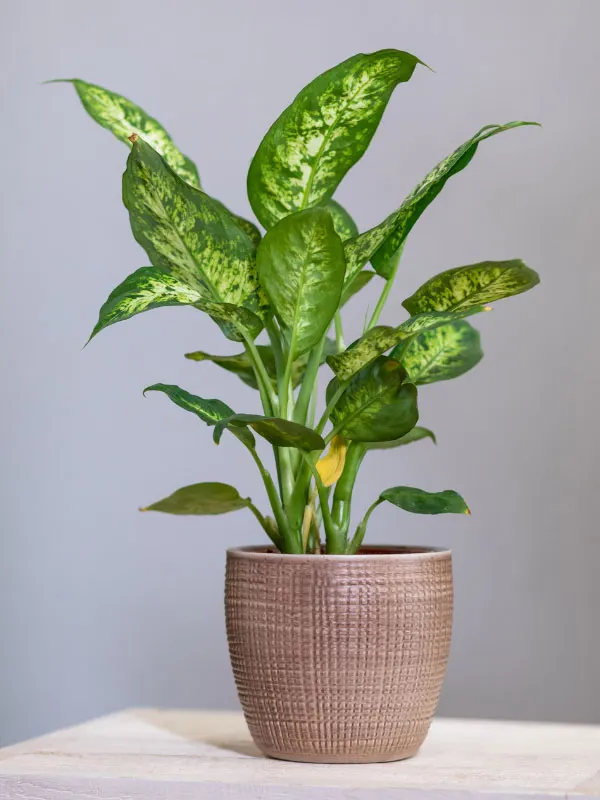
Commonly called Dumb Cane, Dieffenbachia gets its common name as a result of temporary discomfort and oral irritation after your cat or dog (or even people!) nibble on the plant.
The calcium oxalates will cause a lot of oral irritation and burning in the mouth, and even drooling, vomiting and difficulty swallowing.
18. DRAGON TREE (DRACAENA MARGINATA)
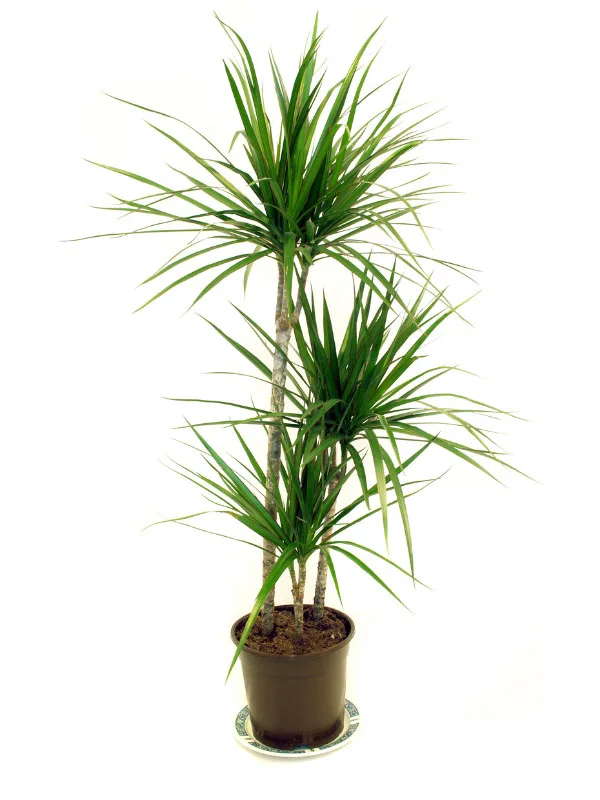
The Madagascar Dragon Tree (Dracaena marginata) is a very common houseplant, and as you guessed, is also toxic.
The saponins that are present in the plant can cause dilated pupils in cats, as well as vomiting, drooling and more.
19. ENGLISH IVY
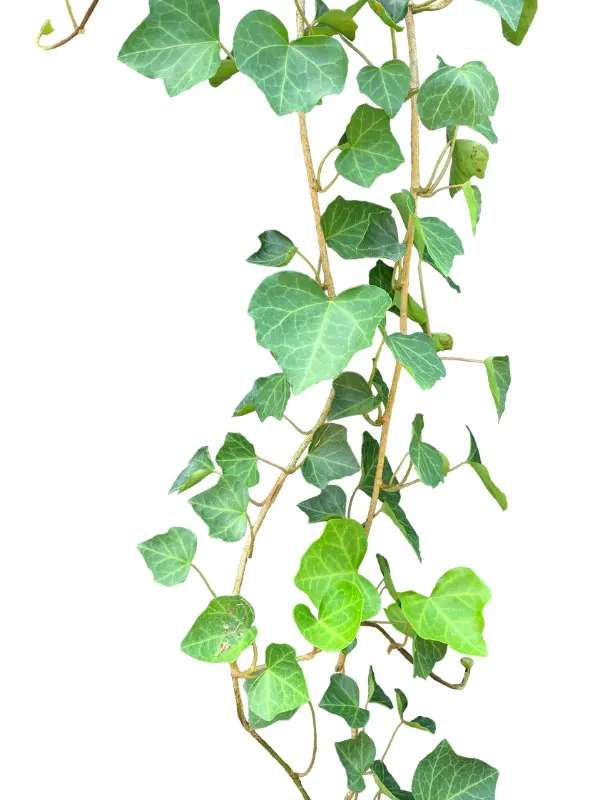
English Ivy (Hedera helix) contains triterpenoid saponins which, if ingested, can cause abdominal pain, drooling, diarrhea and more in your cat or dog.
20. GARDENIA
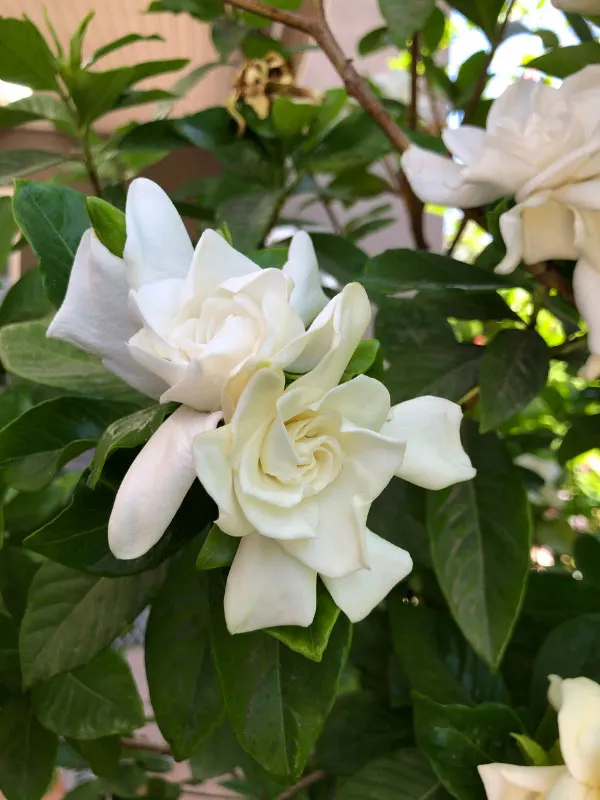
Known for its intoxicating fragrance of the flowers, gardenias are toxic to cats and dogs if the plant is ingested.
Diarrhea, vomiting and even hives can result.
21. GERANIUM
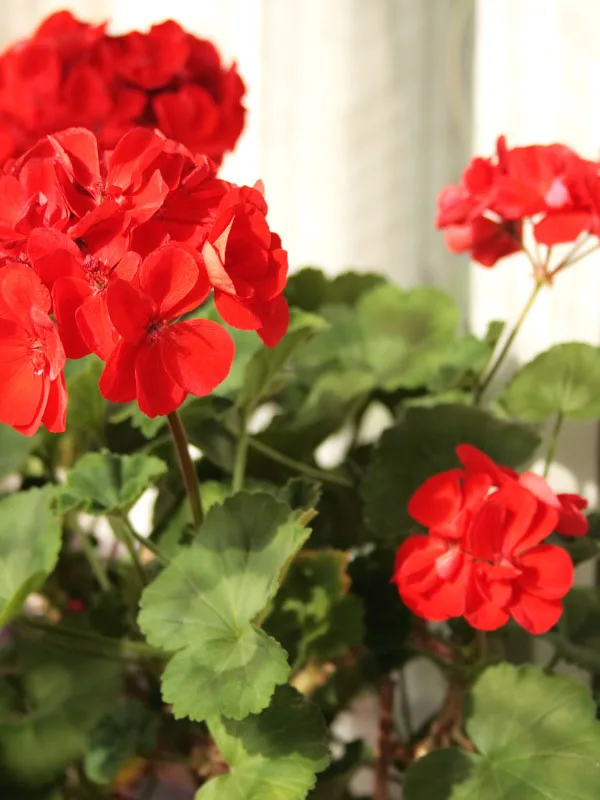
The common potted geranium (Pelargonium) can cause vomiting and dermatitis, and more, in your cats and dogs due to compounds called geraniol and linalool.
22. HAWAIIAN TI
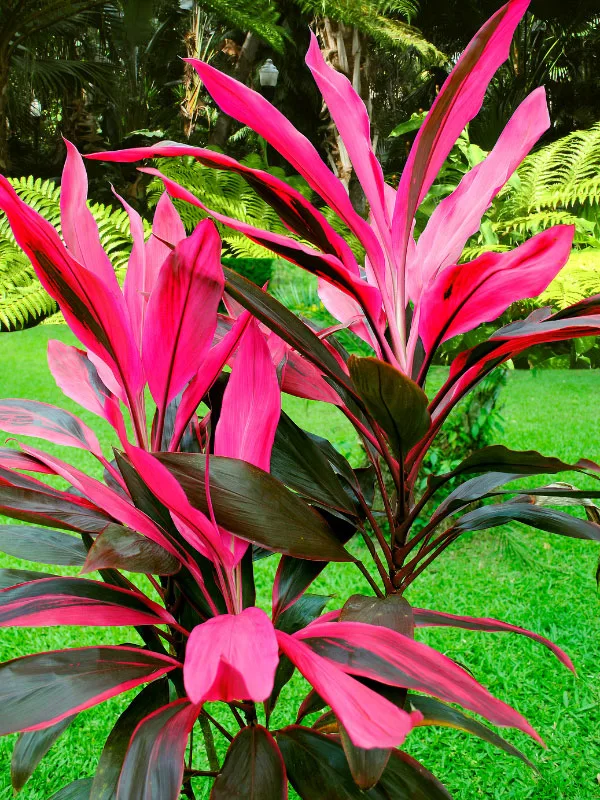
The stunning Hawaiian Ti (Cordyline) plant contains saponins which can cause vomiting, drooling, and more if ingested.
23. HEART LEAF PHILODENDRON
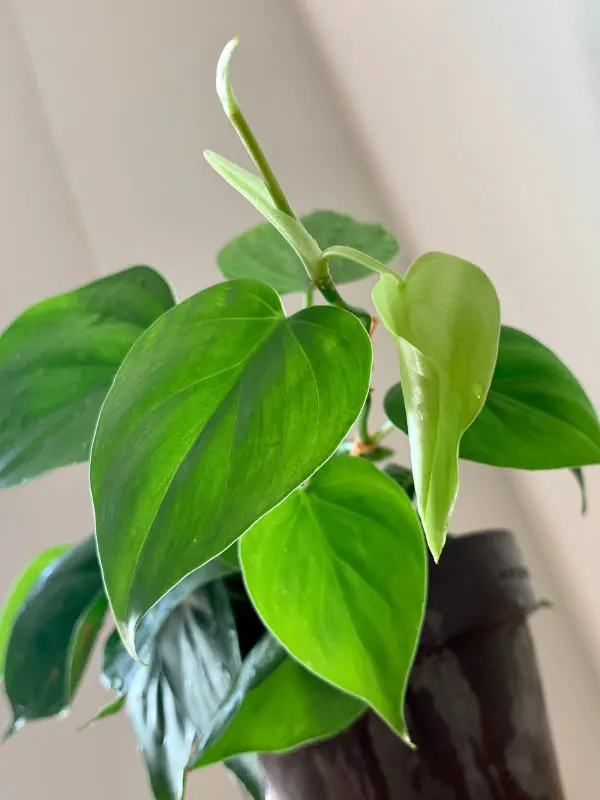
Like any aroid, the Heart Leaf Philodendron contains insoluable calcium oxalates which will cause plenty of oral irritation in your cats and dogs if ingested.
24. JADE
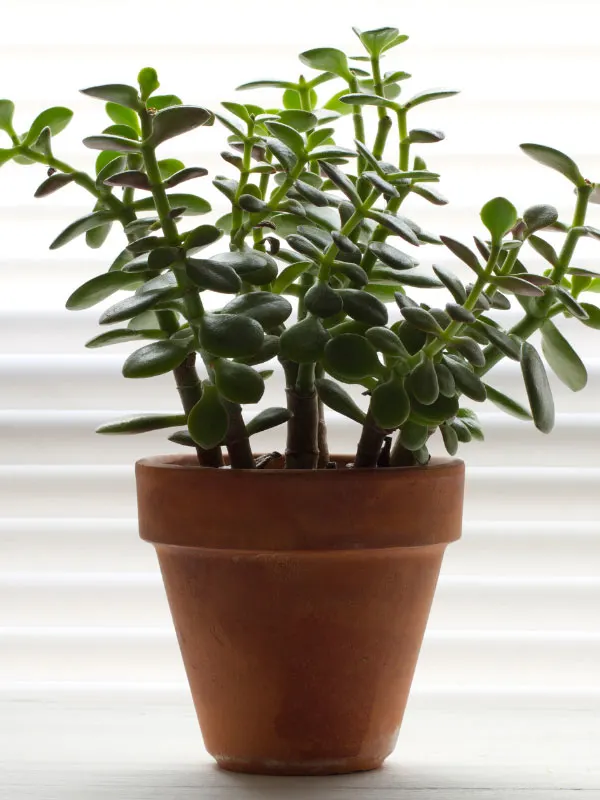
Everyone is familiar with the jade plant (Crassula ovata), but you may not know that it is toxic. Ingestion can cause depression, vomiting and trouble with coordination.
25. KALANCHOE
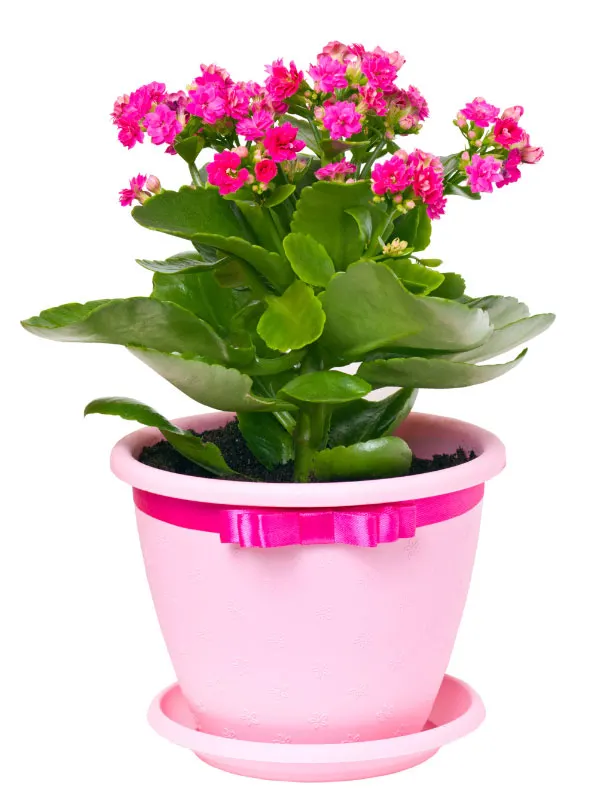
Very commonly sold in supermarkets and nurseries, Kalanchoe plants brighten up your indoor spaces with brightly colored flower.
But beware…they’re also considered toxic due to bufodienolides which can cause vomiting and diarrhea if ingested.
26. LEMON
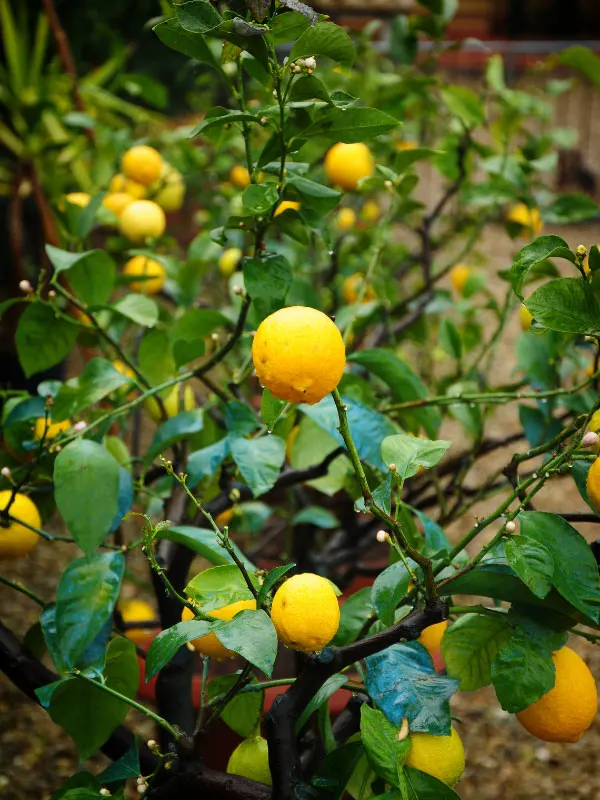
Are you surprised to find this one on the list?
Although the lemon fruit is edible, the skin of the fruit as well as leaves and branches may cause vomiting, diarrhea and even depression and dermatitis for your cats and dogs.
27. MONSTERA DELICIOSA
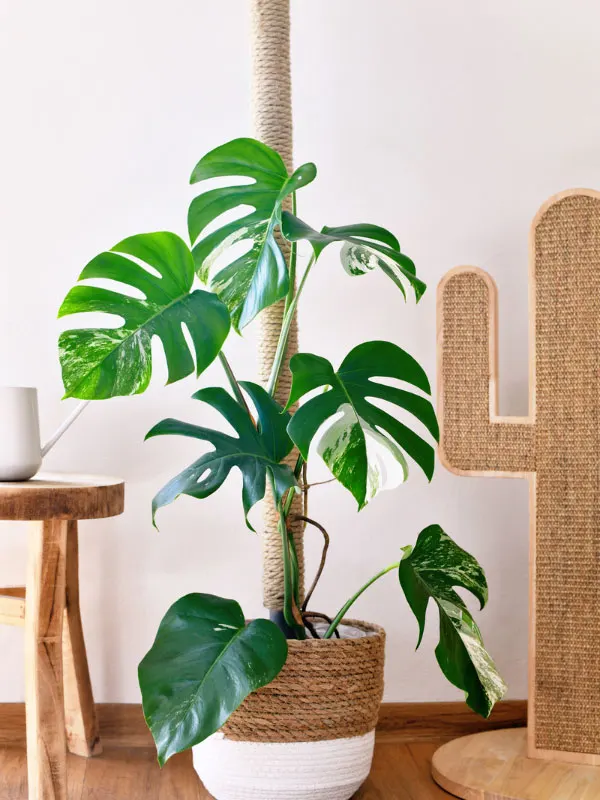
This super popular plant grows in practically every houseplant lover’s home, but since it’s an aroid, it also contains insoluble calcium oxalates that can irritate your pets.
Ingesting Monstera deliciosa can cause strong burning and irritation in the mouth and vomiting.
28. OXALIS
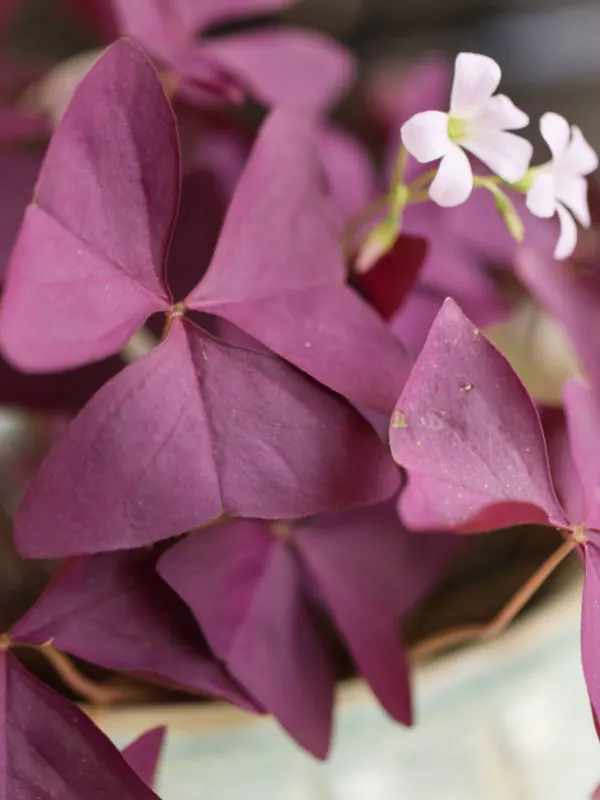
If your cats or dogs ingest Oxalis plants, the soluble calcium oxalates can cause tremors and drooling, and in rarer cases, even kidney failure.
29. PEACE LILY
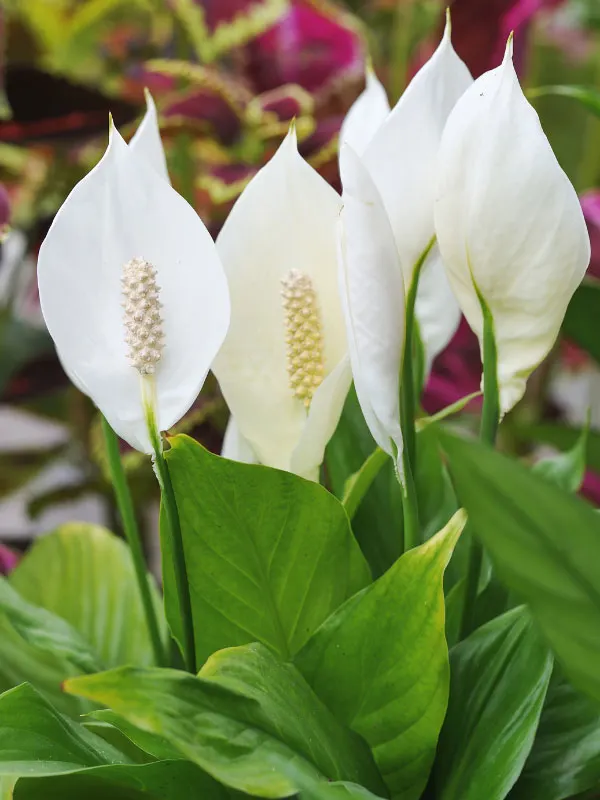
Peace Lilies (Spathiphyllum) are another member of the aroid plant family and thus have insoluble calcium oxalates which can cause oral irritation and burning in the mouth if ingested.
30. PENCIL CACTUS
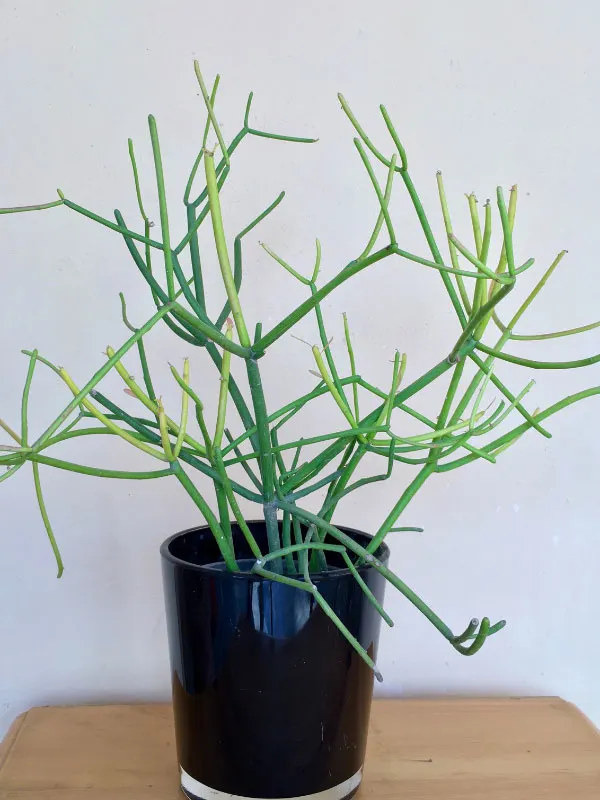
This unusual succulent contains an irritating sap that can cause some discomfort in the mouth and stomach, but the ASPCA states that it is “generally over-rated in toxicity.”
The botanical name for Pencil Cactus is Eurphorbia tirucalli.
31. POINSETTIA
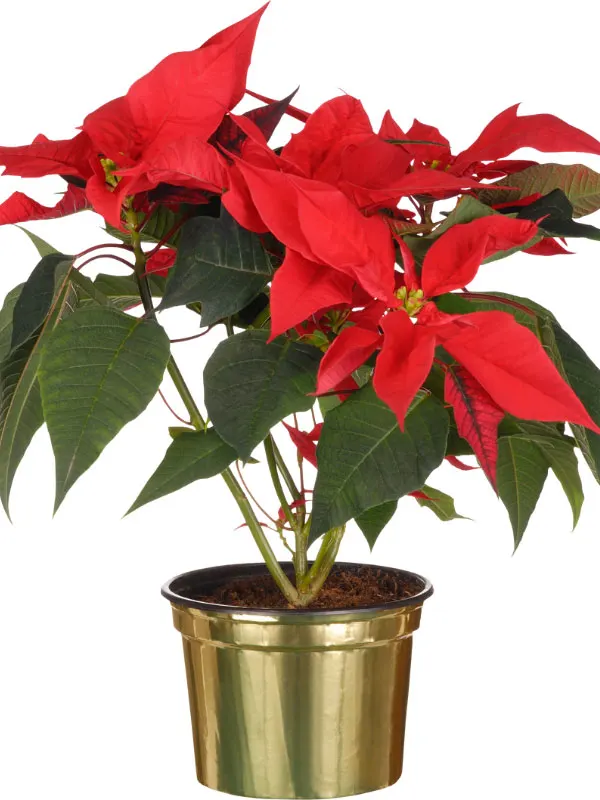
Poinsettia, which is practically found everywhere in December during the holidays, is also in the Euphorbia genus, just like the Pencil Cactus mentioned above.
Similar to the Pencil Cactus, the Poinsettia (Euphorbia pulcherrima) has an irritating sap that is toxic to cats and dogs, but the ASPCA states that it is “generally over-rated in toxicity.”
32. POTHOS
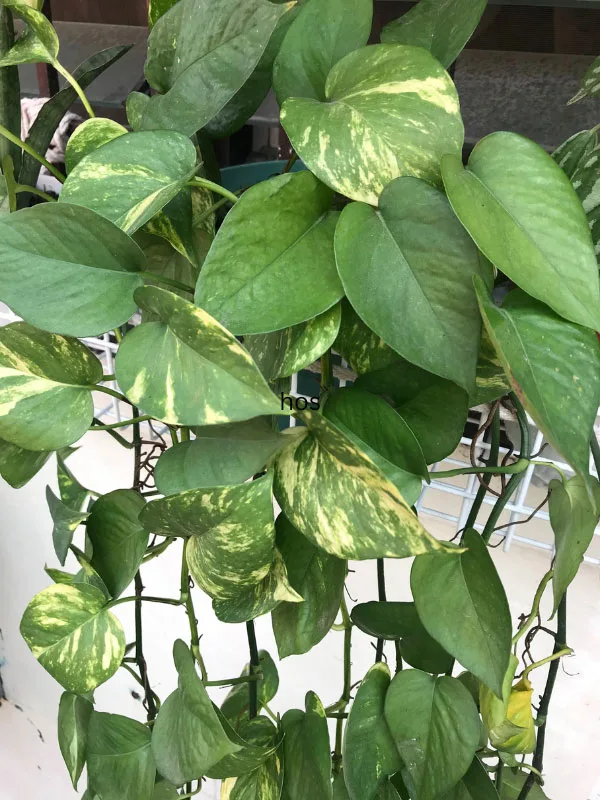
Who doesn’t have a Pothos? And as time progresses, there are more and more beautiful Pothos varieties available in the market.
The insoluble calcium oxalates in this aroid plant family member will cause a burning sensation if your cat or dog nibbles on it. Drooling, vomiting and difficult swallowing can also result.
33. SAGO PALM
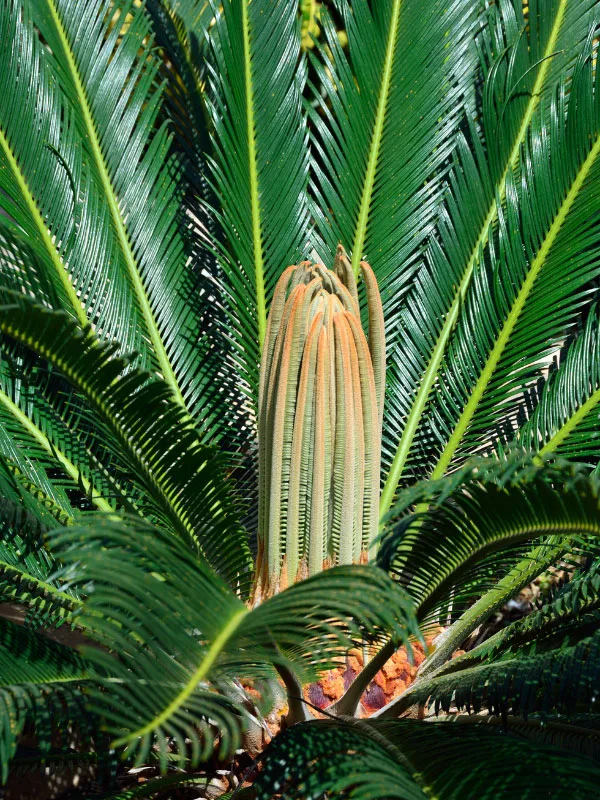
The Sago Palm is not a palm at all, but rather a cycad which is one of the oldest plant types on Earth. Beware of this plant as it is extremely toxic. In fact, it is one of the most toxic plants for cats.
The VCA Animal Hospitals state that the sago palm contains several toxic compounds that can upset your pet’s stomach and even affect the nervous system and damage the liver.
Learn about the signs of sago palm poisoning and take action quickly. If left untreated, it can even result in death.
34. SATIN POTHOS
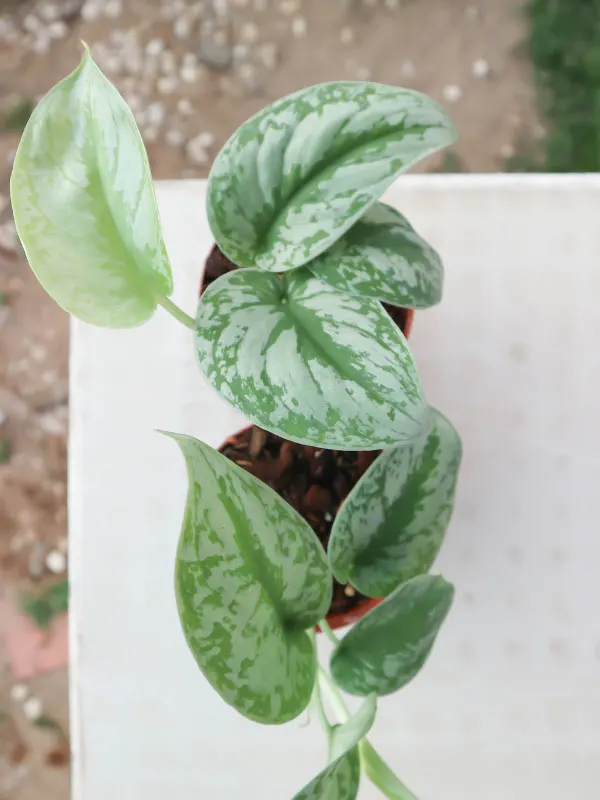
Satin Pothos (Scindapsus) is yet another member of the aroid plant family, and thus contains insoluble calcium oxalates that can cause oral irritation in your cat or dog if nibbled on.
35. SCHEFFLERA
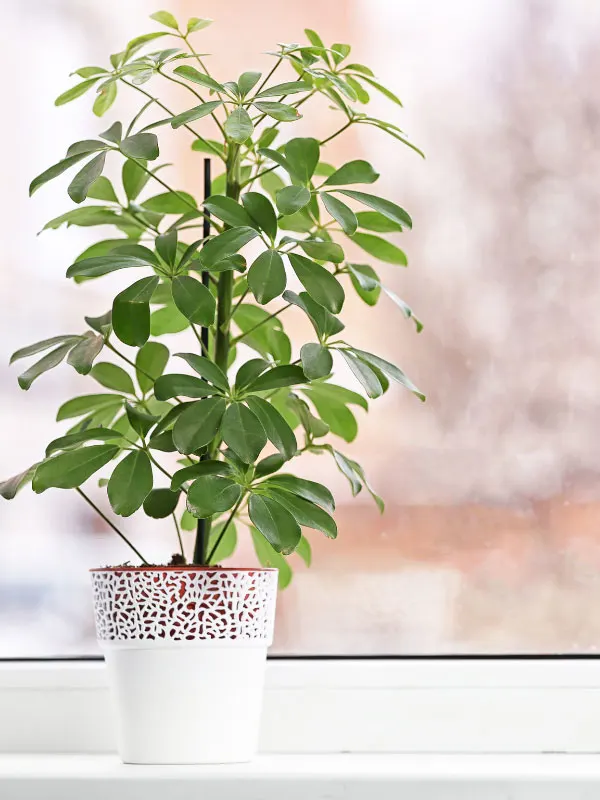
The common Umbrella Tree (Schefflera) contains calcium oxalate crystals.
This is problematic to your cat or dog as it can cause intense burning in the mouth and tongue, as well as drooling and vomiting.
36. SNAKE PLANT
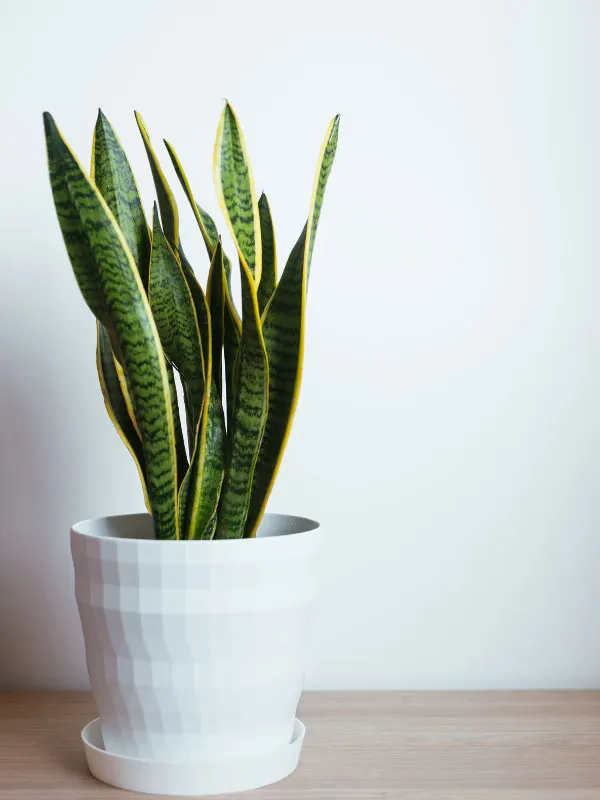
The popular Snake Plant (also known as Mother in Law’s Tongue) belongs to the Dracaena genus. It previously was classified as Sansevieria.
This plant contains saponins which are toxic to dogs and cats. Vomiting, diarrhea and nausea can result if the plant is ingested.
37. SYNGONIUM
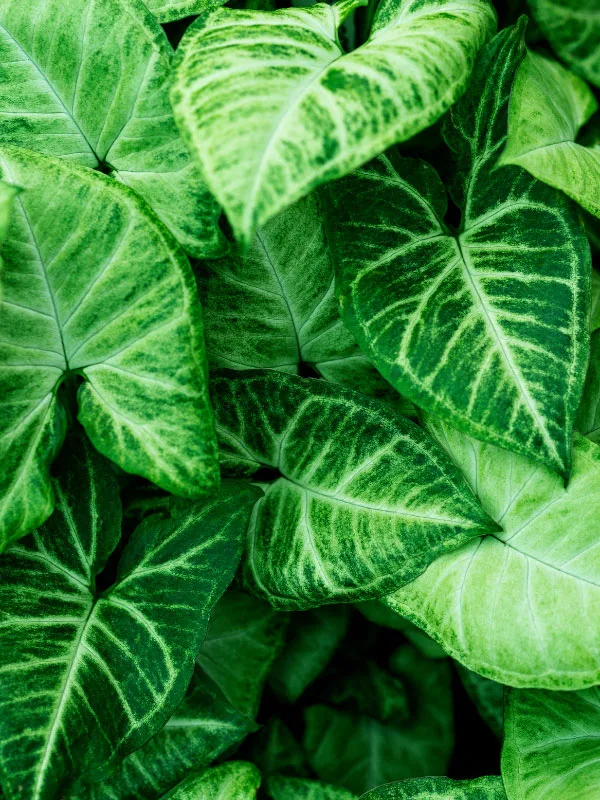
With so many beautiful Syngonium varieties out there, they are hard to resist.
Commonly named Arrowhead Vine, they contain insoluble calcium oxalates and thus can cause oral irritation, drooling and vomiting in your cat or dog if your pet nibbles on it.
38. TRADESCANTIA
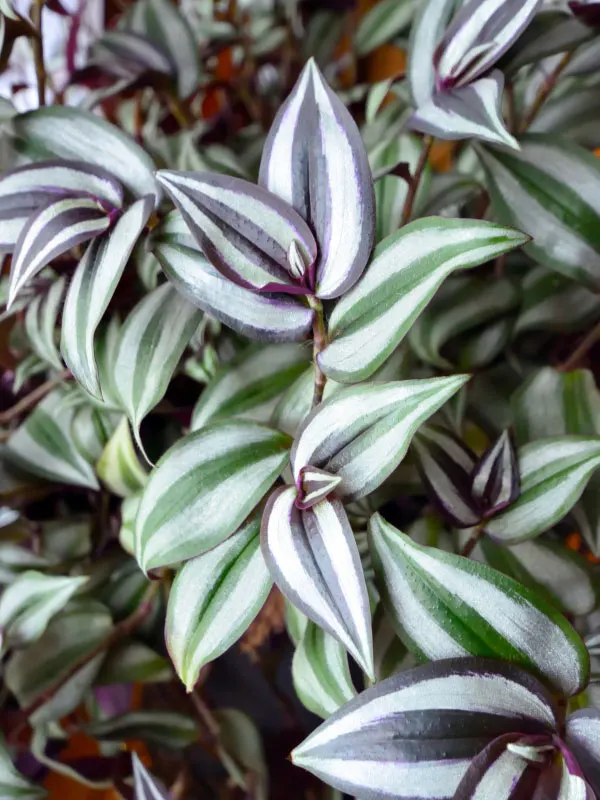
The ASPCA states that Tradescantia can cause dermatitis in cats and dogs.
39. TREE PHILODENDRON
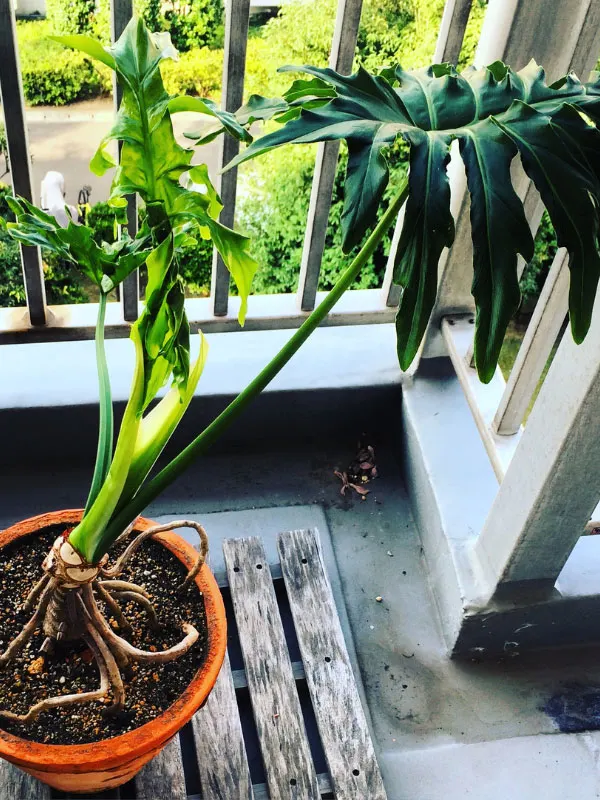
Previously known as Philodendron selloum, it is now classified as Thaumatophyllum bipinnatifidum.
Whatever you call it, this plant has calcium oxalate crystals which will cause irritation and burning in the mouth of your cat and dog if nibbled on.
40. WEEPING FIG (FICUS BENJAMINA)
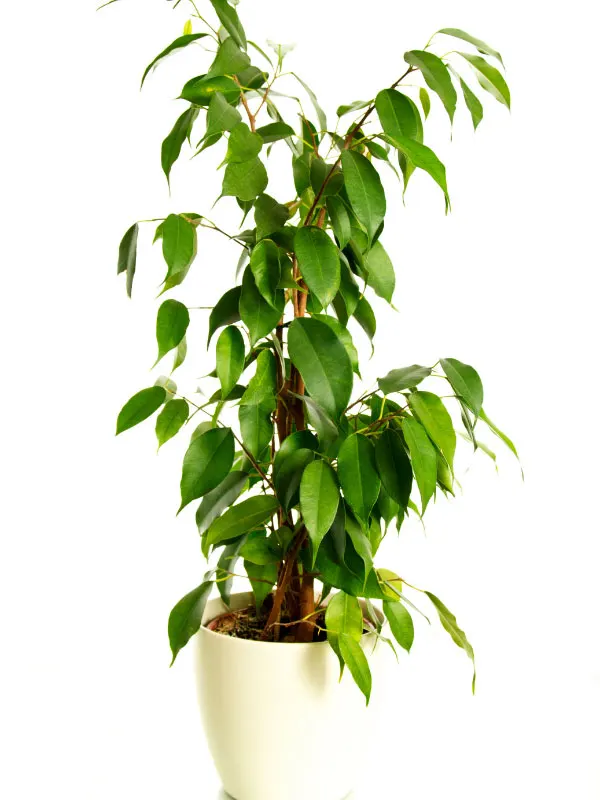
The Weeping Fig (Ficus benjamina) is listed as toxic to cats and dogs as a result of containing a proteolytic enzyme (ficin) and psoralen (ficusin).
RELATED RESOURCES
While there are plenty of houseplants that are considered toxic, there still are enough non-toxic plants that you can grow and have peace of mind!
Be sure not to miss my blog post: 30 Nontoxic Houseplants for Cats & Dogs.

